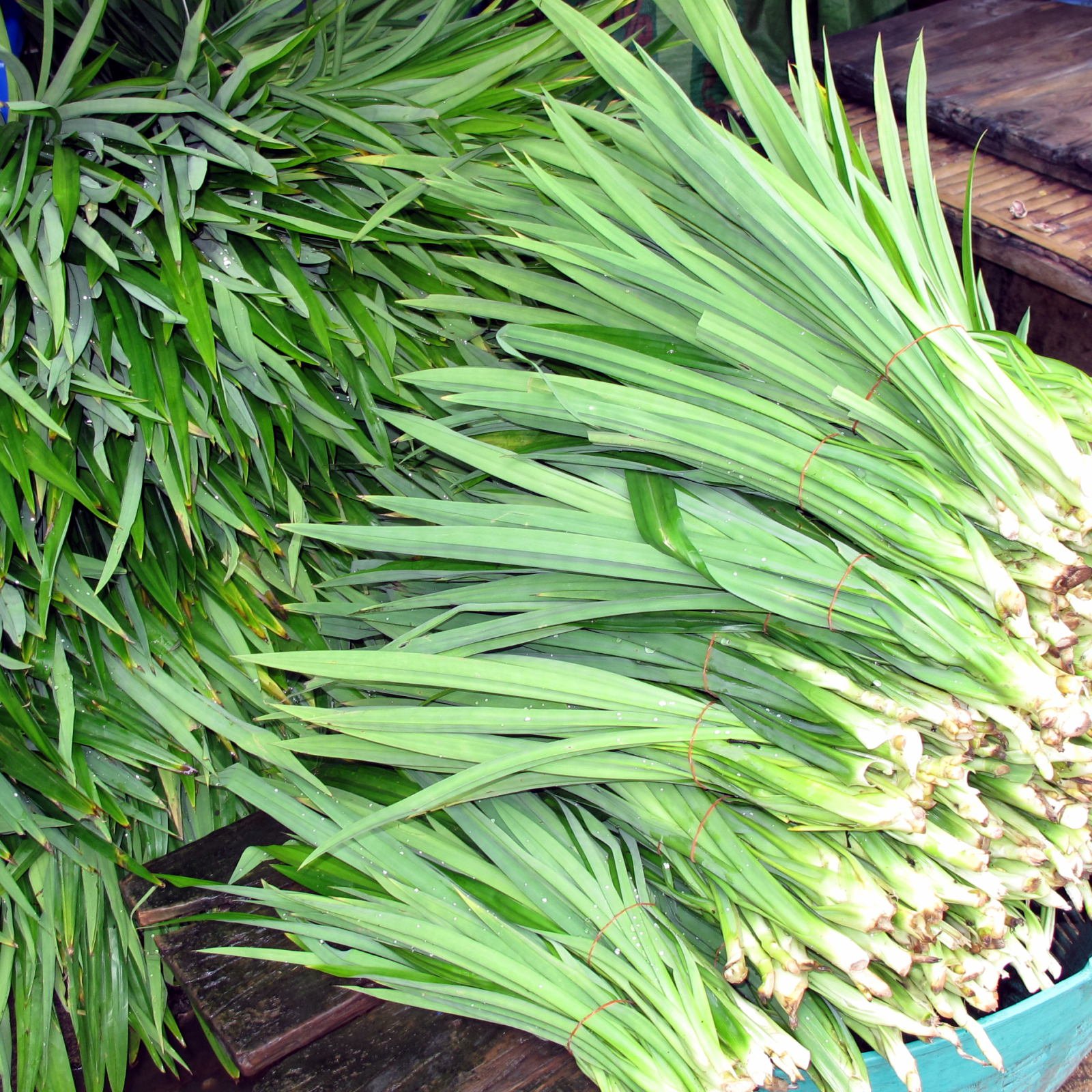Thais have found an amazing number of uses for the leaves (bai) of the pandan plant (toei hawm). The plant is a small shrub whose leaves look like jumbo sized blades of grass. The long slender dark green leaves extend about 80 centimeters from the central root stalk. The leaves contain a highly fragrant oil, and are used to flavor rice and sweets. The leaves are also used to wrap meats such as chicken, which is then barbecued or steamed. The process infuses the meat with the buttery sweet taste and aroma of the leaves.

The fragrance of the leaves is so strong that they have traditionally been used as an air freshener. Even today, it is not unusual to see a few bunches of leaves laid on the ledge behind the rear seat of cars, especially taxis. The aroma released by the leaves when heated by the sun through the rear window keeps the interior of the car smelling sweet. In the heavy traffic of Bangkok, you will sometimes see people selling bunches of pandan leaves “car-to-car” at busy intersections. In the much more laid back Chiang Mai, people will buy bunches of pandan leaves at the markets. A stalk of the nearly meter-long leaves will cost just a few U.S. cents.
The leaves are also used to make small boxes which are filled with sweets. A syrupy juice extracted from the leaves is used to flavor cakes and other sweets. Pandan juice has a very buttery aroma and taste, which can be a bit surprising given its green color.